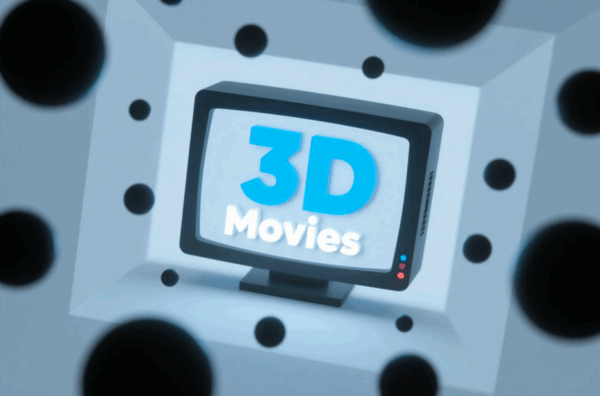The concept of glasses free 3D is now a revolutionary part of modern visual technology, but to understand how far we’ve come, we must return to the very beginning of 3D filmmaking. The world’s first 3D movie marked a groundbreaking moment in cinematic history, laying the foundation for decades of stereoscopic development. Although today’s glasses free 3D technology removes the need for special eyewear, early 3D films relied on complex projection methods and viewer equipment to create the illusion of depth.
This article explores the identity of the first 3D movie ever made, discusses the technologies that followed, and examines how we arrived at glasses free 3D today.
The World’s First 3D Movie: A Historical Analysis
1.1 “The Power of Love” (1922)
The title of the first 3D film generally goes to The Power of Love, a silent film released in 1922. It premiered at the Ambassador Hotel Theater in Los Angeles and utilized the anaglyph red-green method, which required viewers to wear colored glasses. The film was shot using a dual-camera system and projected using synchronized projectors—an approach that required precise mechanical coordination.
Key Details:
- Release Year: 1922
- Duration: Approx. 55 minutes
- Projection Technique: Anaglyph
- Technology Used: Dual-strip camera and projection system
- Status Today: The film is currently considered lost, with no surviving prints
1.2 Why “The Power of Love” Matters
Even though “The Power of Love” is lost, it set important precedents:
- First commercial use of stereoscopic film techniques
- Audience’s exposure to depth perception on-screen
- Foundation for future 3D innovation, including glasses free 3D
Development Timeline Toward Glasses Free 3D
2.1 The 1950s: The Golden Age of 3D Cinema
The 1950s witnessed a surge in 3D film popularity. Between 1952 and 1954, over 50 feature-length 3D films were released in the U.S., including hits like House of Wax and Creature from the Black Lagoon. This era introduced polarized 3D glasses to improve viewing comfort.
2.2 The 1980s–2000s: Technological Refinement
- IMAX began experimenting with stereoscopic films in large formats.
- Computer-generated imagery (CGI) started merging with 3D filming.
- RealD and Dolby 3D systems emerged, using polarized light for superior color and clarity.

Evolution into Glasses Free 3D Technology
3.1 Applications of Glasses Free 3D Today
Glasses free 3D is used in:
- Smartphones (e.g., RED Hydrogen One, Nintendo 3DS)
- Advertising panels in high-traffic areas like Tokyo and New York
- Medical imaging, allowing doctors to visualize in three dimensions
- Military simulation and aviation training modules
3.2 Advantages over Traditional 3D
- No need for accessories
- More natural viewing experience
- Better integration into consumer electronics
Comparing Generations of 3D Technology
| Era | Technique | Eyewear Required | Commercial Use | Notable Example |
| 1920s | Anaglyph (Red/Green) | Yes | Experimental | The Power of Love (1922) |
| 1950s | Polarized Light | Yes | Widespread | House of Wax (1953) |
| 1980s–2000s | Digital Polarization | Yes | Standardized | Avatar (2009) |
| 2010s–Present | Glasses Free 3D | No | Emerging | 3D billboards, 3DS |
Modern Impacts of Glasses Free 3D on the Film Industry
Glasses free 3D is poised to redefine how audiences interact with visual content. While cinematic theaters still rely heavily on polarized 3D due to screen size and angle constraints, the growth of home entertainment, digital signage, and virtual interfaces is rapidly expanding the market for autostereoscopic systems.
By 2024, the global market size for glasses free 3D displays was estimated at $3.8 billion, and it is expected to grow at a CAGR of 16.2% until 2030. This explosive trend reflects consumer interest in immersive experiences without hardware limitations.
Conclusion
Though “The Power of Love” may no longer exist physically, its contribution to film history remains unmatched. As the first known 3D movie, it introduced a visual dimension that filmmakers have continuously explored for over a century.
Today, glasses free 3D represents the next frontier—no longer are viewers tethered to awkward glasses or limited viewing angles. With each passing year, technology continues to build upon a vision sparked in 1922, proving that innovation in cinema is as boundless as imagination itself.





